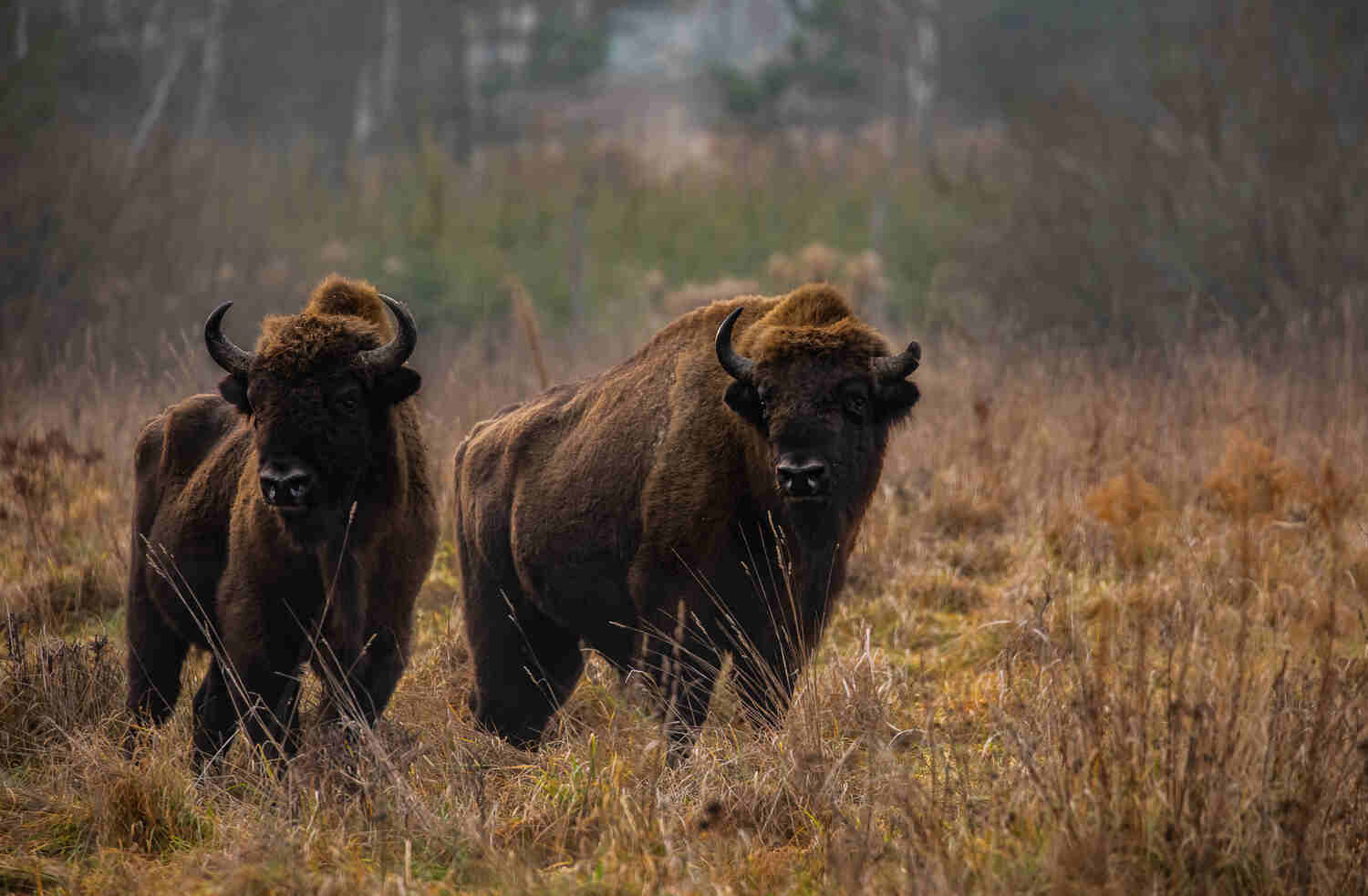Simulations show why the European buffalo nearly went extinct, identify optimal areas for conservation

During the last ice age, large herds of buffalo (bison) were found in Europe. However, by 1927, the European buffalo became extinct in the wild, leaving only about 60 individuals in captivity. The reasons behind the decline of these grazers have been debated by scientists for many years, with hunting by humans and rapid environmental change being the main factors.
To gain a comprehensive understanding of what led to the near extinction of the European buffalo, researchers have integrated historical records, fossils, and ancient DNA. This approach has proven to be valuable, as it allows scientists to analyze various sources of information and piece together the puzzle of what caused such a population decline.
Historical records offer insights into human activities, such as hunting and habitat destruction, which may have played a significant role in the decline of the European buffalo. These records allow researchers to track changes in population size and distribution over time and correlate them with human actions.
Fossils provide evidence of the buffalo's past distribution and population dynamics. By studying fossil remains, scientists can determine how the buffalo's range has changed over thousands of years. This information can help identify areas that were historically important for the species and potentially guide rewilding efforts.
Ancient DNA analysis is a powerful tool that allows researchers to study genetic diversity and population structure in extinct or endangered species. By extracting DNA from ancient remains, scientists can gain insights into the genetic makeup of past populations. This knowledge is crucial for understanding how genetic diversity has been affected by past events and can inform conservation strategies moving forward.
By combining these different sources of information, researchers can paint a more complete picture of the factors that led to the near extinction of the European buffalo. This knowledge is not only valuable for understanding the past but also for identifying suitable areas for rewilding efforts. By knowing where populations historically thrived, conservationists can make informed decisions about where to reintroduce or augment existing populations of European buffalo to restore their ecological role and promote their long-term survival.
To explore how climate, hunting by humans, and land use change influenced the bison population and distribution across Europe, researchers ran 55,000 different simulations. This allowed them to toggle off different variables one at a time and analyze their impact on the bison population.
The findings from this study are crucial for conservation efforts aimed at rewilding European buffalo. By identifying optimal areas for conservation based on historical data and simulations, scientists can now focus their efforts on reintroducing these majestic creatures in locations where they are most likely to thrive.
Currently, the European buffalo is a priority species for conservation as it serves an important role in restoring grassland habitat. Thanks to recent efforts to reestablish and rewild the species, there are now approximately 7,300 free-ranging European bison.
The methodology used in this study could also be adapted to reconstruct the causes of population declines and range collapses of other large herbivores, including American buffalo, to improve awareness of past threats and enrich current conservation plans.
Lessons learned from this study are informing new lines of inquiry for July Pilowsky, a disease ecologist at Cary Institute of Ecosystem Studies. At Cary Institute, they are translating the bison simulation code into new software that models disease transmission in wildlife. “I literally have my bison code open on one monitor and my new code that I'm building on another monitor,” they said. Instead of simulating buffalo abundance and range, the new software shows the prevalence and distribution of a disease in a species over time.
Overall, this study highlights the power of combining scientific techniques, such as supercomputer simulations, with historical data to inform conservation strategies. It provides a roadmap for rewilding initiatives that can help restore balance in ecosystems and protect endangered species like the European buffalo.

 How to resolve AdBlock issue?
How to resolve AdBlock issue?